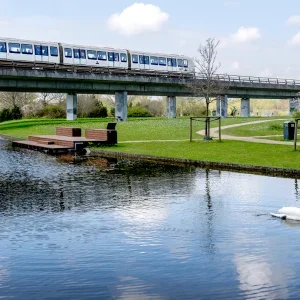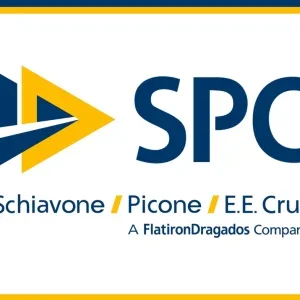First breakthroughs at the Lower Lea Valley cable tunnel drives in east London at the end of March marked a milestone in the city’s redevelopment of the site to host the 2012 Olympics.
Excavation on the pair of approximately parallel 5.8km long tunnels between West Ham and Hackney to house cables for National Grid (4.15m i.d.) and EDF (2.82m i.d.) began in the middle of last year. Contractor J Murphy & Sons has used four Lovat TBMs for the project, and they started up in short mode from neighbouring shafts, the pairs in each setting off in opposite directions.
First to breakthrough on 29 March was ‘Lucille’, the 4.7m diameter Lovat RMP185E driving the leg of the NG tunnel to Hackney. The mixed face EPBM began the 3.66km bore in May 2006 and erected 1.4m long trapezoidal, gasketed segments made by Charcon incorporating polypropylene fibres.
Next day was first breakthrough on the EDF tunnel, in West Ham. It was excavated by a 3.3m diameter Lovat RMP131SE machine – ‘Helen’ – which bored 2.3km. Segments used were straights, left and right tapers, also from Charcon.
Along the alignment of the tunnels, driven at depths of 13m-33m, the formations have consisted of man-made fill, including landfill, and strata comprising Thanet Sands, Thames Gravel and Cretaceous chalks. The groundwater is up to 14m above invert level.
The remaining works are the last stretch of the EDF tunnel, being bored by the other RMP131SE, called ‘Fionnuala’, which should hole through mid-May; and the leg of the National Grid tunnel to West Ham being driven by ‘Sonia’, another RMP185E, which started boring last July and is due to breakthrough shortly.
Tunnelling work on the project is 95% complete and should be finished by June. Then the tunnels will be cleaned and cable laying will commence. Designer for J Murphy & Sons on the design-build contract was Faber Maunsell–AECOM.







